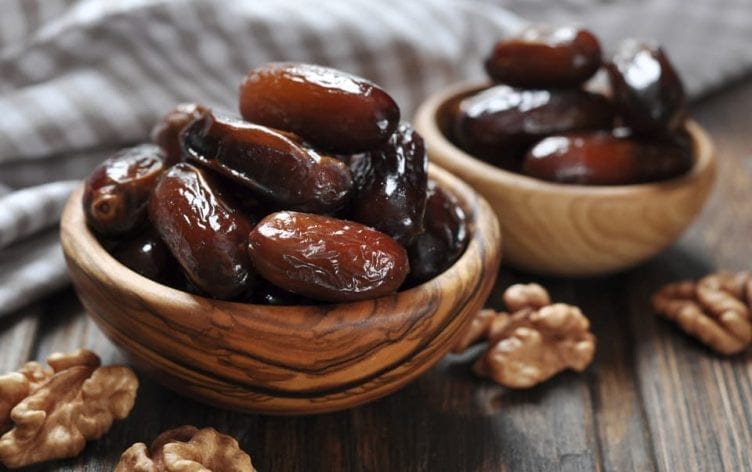
Hit the health-food section of your local supermarket lately? If so, you’ve likely seen these trendy foods crop up and are wondering if they’re worth the hype. Here are some trendy-ish foods you should try (or not!):
1. Medjool dates: It’s great that dates are high in fiber and potassium but they’re 70% sugar by weight, so treat these as a treat. Each serving of 3 pitted dates provides 199 calories, 54 grams of carbs (50 grams of which are sugar), 14% of our daily potassium and 5 grams dietary fiber. If you’re good with portion control or are carb loading for a marathon, they are totally worth the hype.
2. Spelt flour: Ground spelt, a grain existing since biblical times, has become a trendy wheat flour alternative. Spelt flour contains less gluten which can be challenging to bakers: baked goods from spelt flour have a harder time achieving heights because gluten gives baked goods their structure. Nutrition-wise, spelt flour is similar to 100% whole wheat flour, making it–eh!–somewhat worth the hype if you’re looking to vary your baking routine.
| Flour (¼ cup) | Calories | Fat (g) | Total Carbs (g) | Fiber (g) | Protein (g) |
| Spelt flour | 120 | 1 | 22 | 4 | 4 |
| 100% Whole wheat flour | 110 | 0.5 | 21 | 4 | 4 |
3. Nutritional yeast: These dried yellow flakes resemble fish food but don’t let that fool you! Nutritional yeast is made from purified cane or beet molasses and gives a savory, almost cheesy taste to your dishes. It’s high in protein and full of B-vitamins making it useful for vegans who tend to have a harder time getting enough vitamin B12. Each 1/4 cup provides 45 calories and 6 grams of protein, so try it on popcorn or mixed into scrambled eggs, soups, stews and sandwich spread. For vegans (or really anyone looking to get some extra protein and B-vitamins), this powdery gold is worth the hype!
4. Pea protein powder: The protein powder market, long dominated by milk-based proteins like whey and casein, are now heralding plant-based options like pea protein. On the upside, pea protein powder is a good alternative for vegans and people with milk-protein allergies. The downside? It doesn’t contain all 9 essential amino acids so it should be complemented with rice protein. If you’re vegan or just want to consume more plant-based protein, pea protein is worth the hype since it’s nutritionally similar to whey protein isolate (see below).
|
Protein Powder (1 scoop approx. 30 g) |
Calories | Fat (g) | Total Carbs (g) | Protein (g) |
|
Pea Protein Isolate |
120 | 2 | 1 | 24 |
|
Whey Protein Isolate |
110 | 0.5 | <1 | 25 |
5. Hemp milk: Hemp milk is made from ground hemp seeds blended with water and is fortified with vitamins A, C, D, B12, and B2. Compared to 2% reduced-fat cow’s milk, hemp milk is lower in calories but has only half the protein. It’s worth the hype if you can’t drink cow’s milk and want an alternative but, for the rest of us, cow’s milk still gives more bang for your buck.
6. Ghee: We’ve noticed an influx of recipes that list ghee in the ingredients list lately. Ghee, or clarified butter, is made by warming butter and separating the fat from the milk proteins, whey and casein, making it generally safe for those with dairy allergies. Ghee also happens to be more heat-stable compared to it’s brother butter, allowing you to use it for high-heat searing and deep frying without an offensive burnt taste. If we’re basing it’s hype-worthiness on nutrition alone though, this is another–eh–somewhat worth the hype. Ghee does contain more short- and medium-chain fatty acids than regular butter (which are not associated with cardiovascular problems in the same way as long-chain ones are), but tablespoon for tablespoon, ghee provides the same amount of fat and calories as traditional butter (112 calories and nearly 13 grams of fat) so it’s best to use it in moderation.
Which of these 6 trendy foods have you tried lately? Share your comments below.



